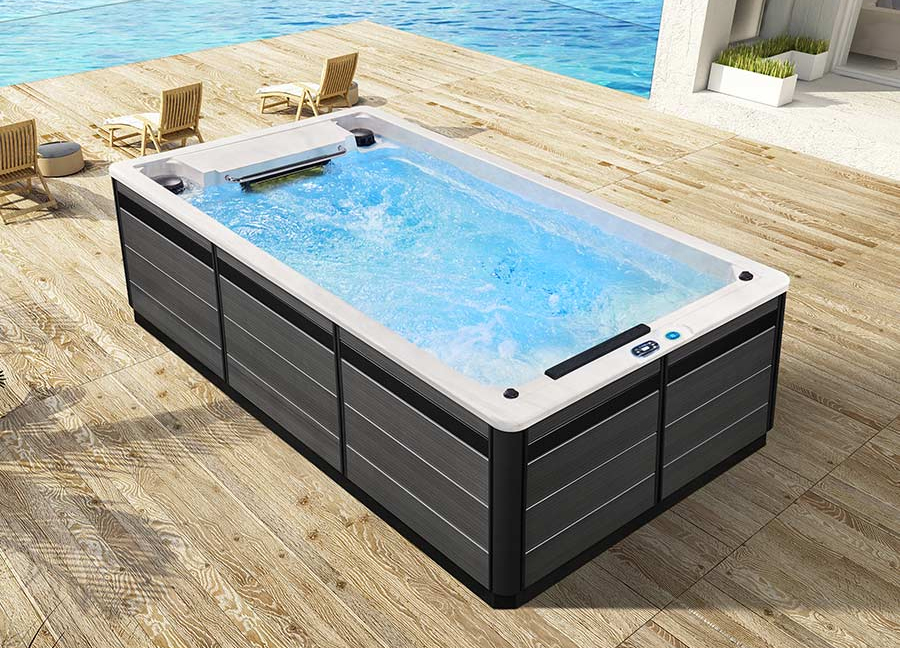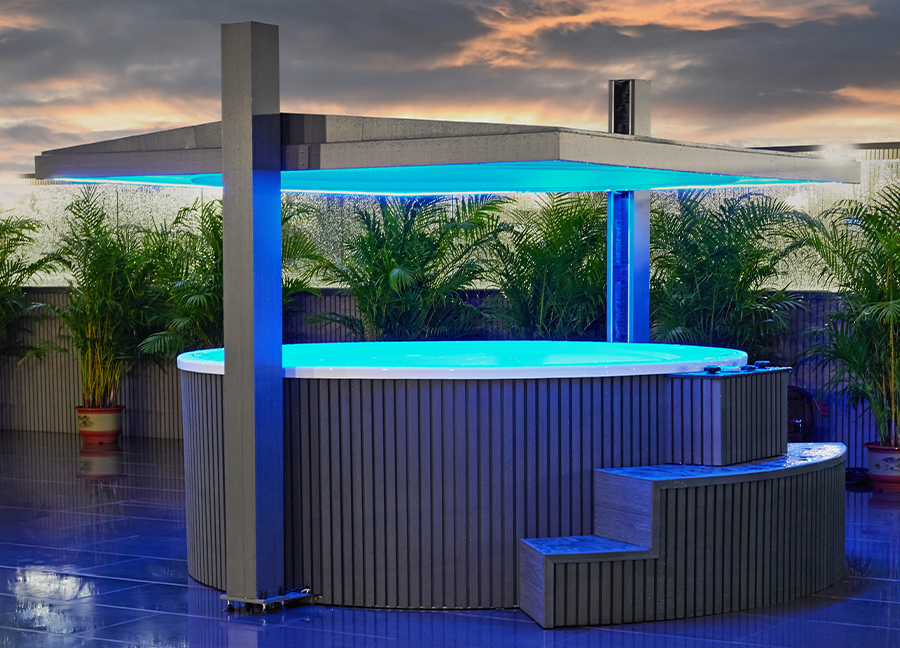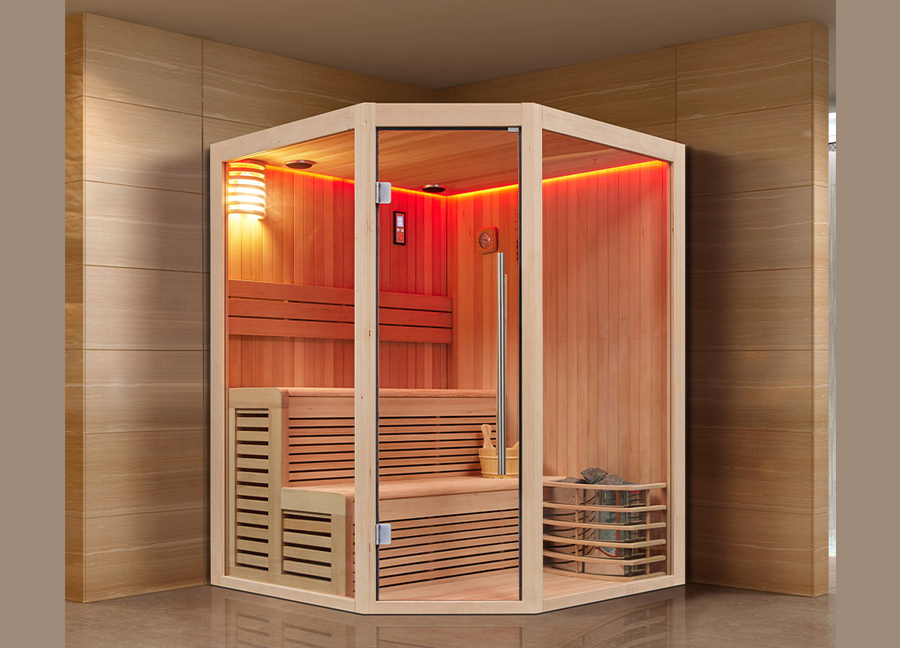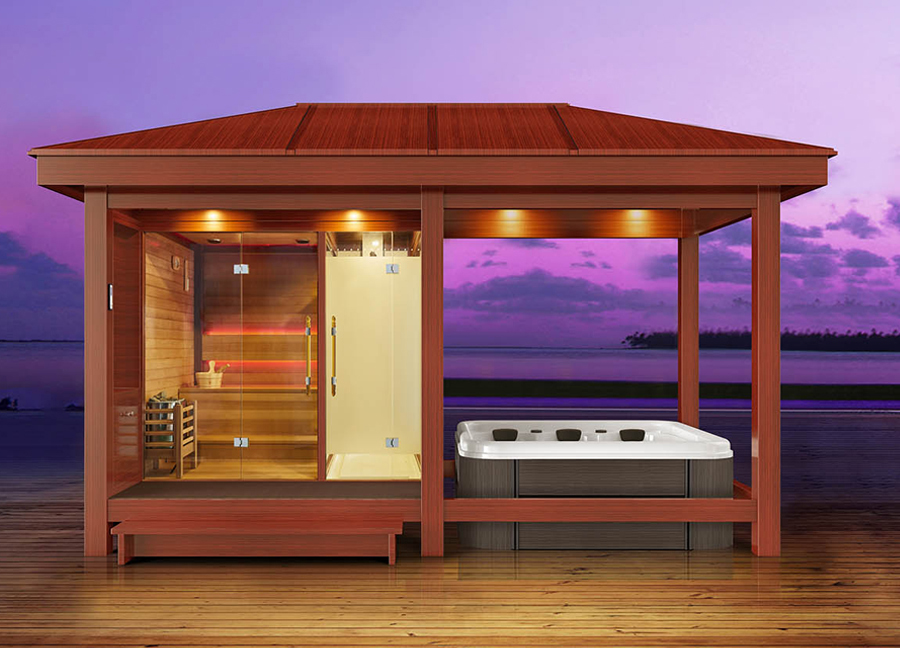In 2025, sauna steam rooms will become increasingly common health and wellness amenities in private homes and leisure facilities. Outdoor sauna steam rooms, in particular, are gaining popularity due to their advantages of not taking up indoor space, proximity to nature, and ease of use. People can install a standalone outdoor sauna steam room in their own courtyard, terrace, garden, or even by their pool, enjoying the relaxing experience of a humid and warm environment.
However, during the design and installation process, an often overlooked yet crucial question is: Does an outdoor sauna steam room require a drainage system? If so, how should it be properly configured and maintained?
This article will systematically address this question, focusing on steam sources, condensation, usage behavior, structural design, maintenance, and cleaning. This article will clarify the necessity and standard requirements of a drainage system, helping users make the right decisions and implement appropriate installation.
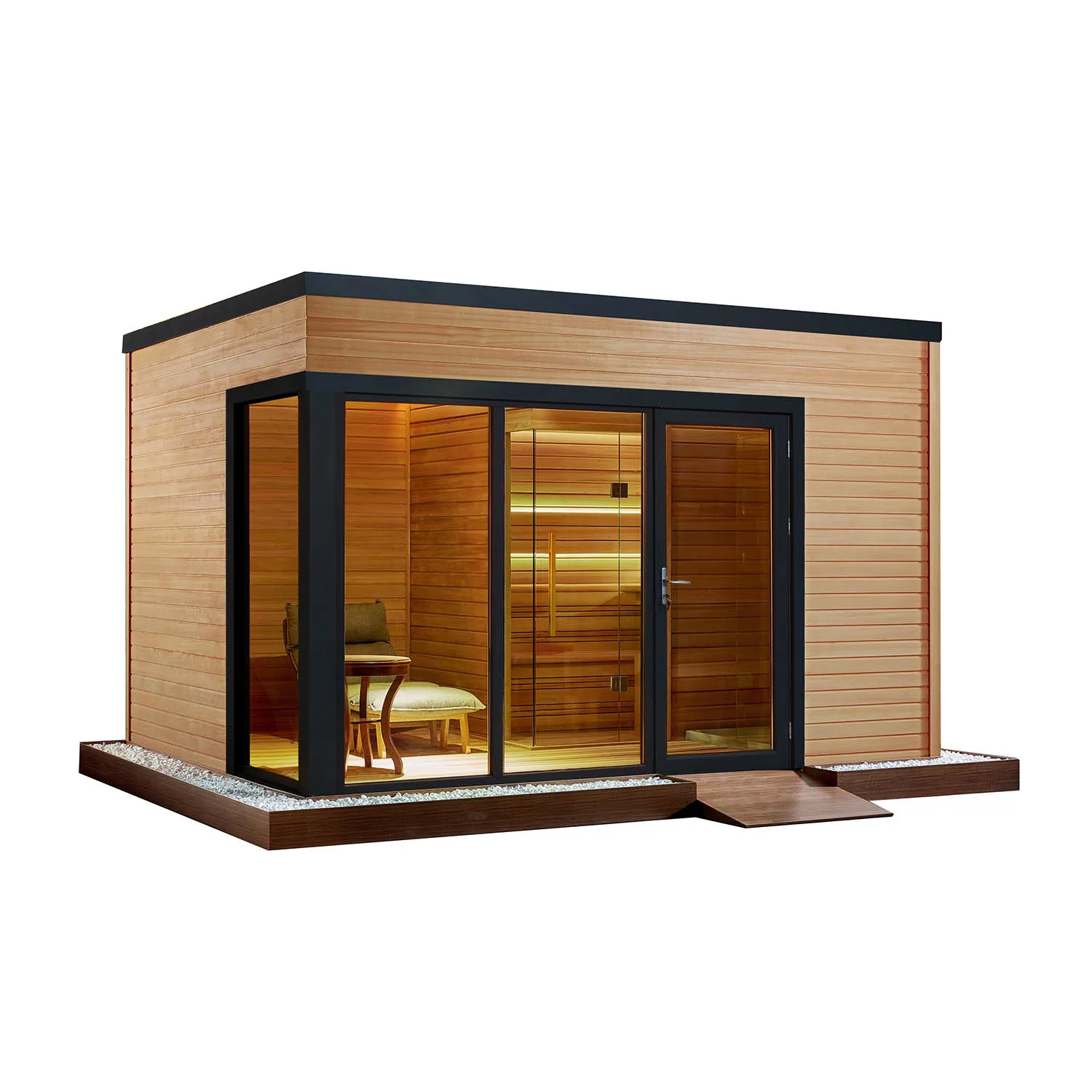
How Steam Saunas Work and Moisture Sources
To answer the question of "Do outdoor sauna steam rooms need drainage?", we must first understand their operating mechanisms and the sources of moisture and water.
1.1 Basic Structure of a Sauna Steam Room
A sauna steam room primarily consists of the following components:
· Sealed chamber structure: Made of moisture-proof wood or composite materials, providing thermal insulation and moisture-proofing;
· Steam generator: Using electric or gas heating, it heats water to over 100°C to generate highly humid steam;
· Control system: Adjusts parameters such as temperature, humidity, and time;
· Steam outlet and exhaust vents: Inject steam into the room while maintaining a minimal exhaust balance;
· Seat and wall coverings: Made of corrosion-resistant and heat-resistant materials (such as cedar or spruce).
1.2 Sources of Moisture and Water
During a steam sauna session, there are several sources of moisture:
Sources | Type | Description |
| Steam condensation | Condensation | High-temperature steam forms droplets when it contacts cold surfaces such as walls, ceilings, and the human body |
| User perspiration | Sweat | The human body is heated and produces a large amount of sweat |
| Floor washing | Clean after use | Water accumulates on the floor by flushing the seat, walls, or floor |
| Steam generator residual water | Drain water | Drain the steamer after each use to prevent scale buildup |
Therefore, even if used outdoors, as long as it is a steam sauna, there will inevitably be issues with moisture and condensation, which in turn necessitates drainage.
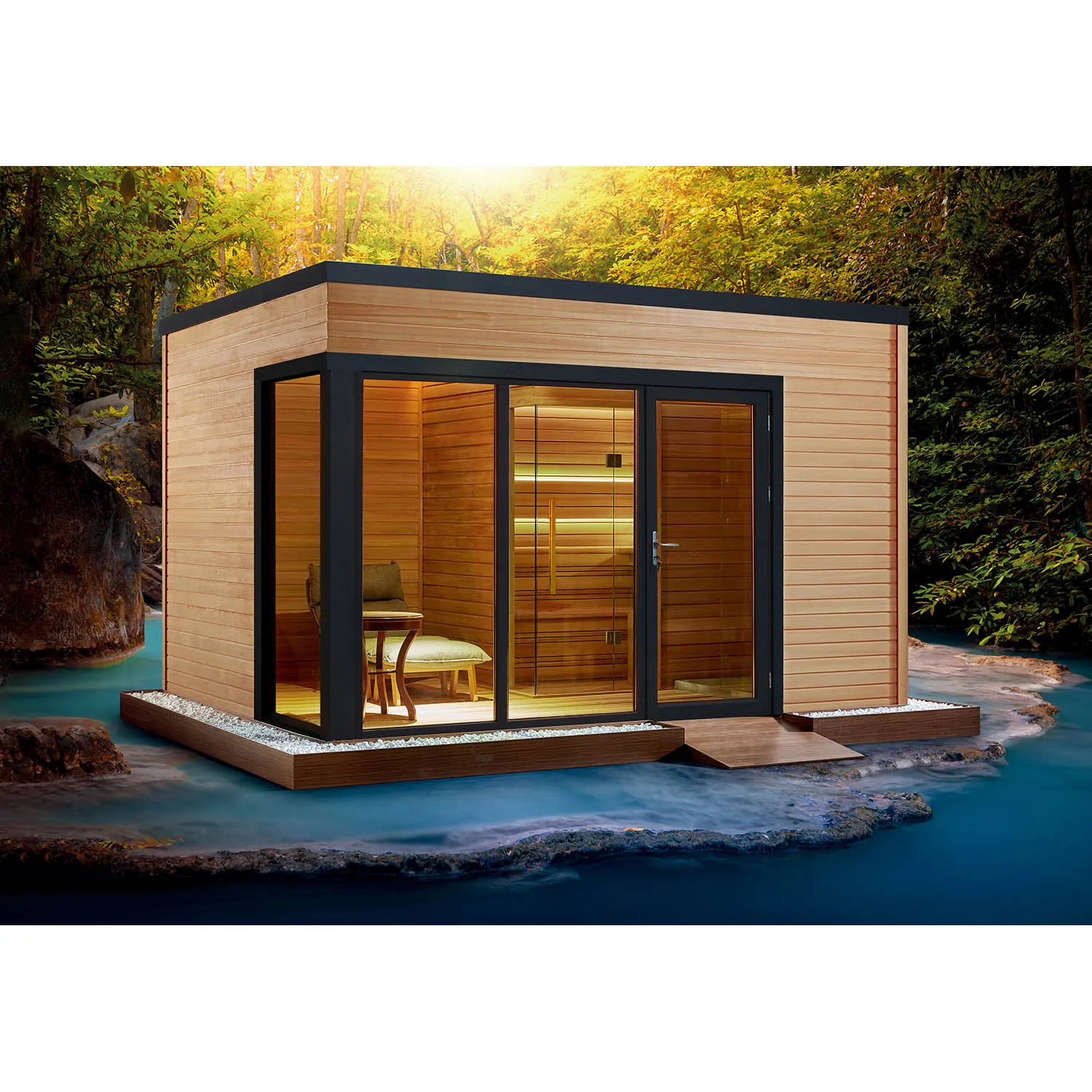
Does an outdoor sauna steam room need drainage?
2.1 Significant Condensation, Easily Leading to Water Accumulation
In a steam environment, 100% humidity means a high concentration of moisture per cubic meter of air. Upon contact with any surface cooler than the steam temperature (especially ceilings, windows, and floors), condensation quickly forms droplets. Over extended use, this condensation accumulates, forming puddles on the floor.
Without a drainage system, this water remains on the floor, causing the following problems:
· Slip hazards;
· Prolonged moisture can cause mold, corrosion, and wood swelling;
· Impacts user experience and safety.
2.2 Persistent Floor Moisture from User Sweating
Even after short periods of use, sweat from users accumulates on the floor and seating of an outdoor sauna steam room, mixing with condensation to form a pool of liquid. If not drained away promptly, this can easily lead to odor, bacterial growth, and difficulty cleaning.
2.3 Cleaning and disinfection require water, increasing the water load
Any sauna steam room requires frequent internal cleaning and flushing after extended use. Flushing walls, floors, benches, shower heads, and other areas uses a large amount of water. Without an effective drainage system, this creates a significant risk of flooding and may even damage wooden structures or electrical components.
2.4 Steam Generators Require Regular Drainage and Maintenance
Most steam generators require drainage of residual water and scale after operation. While this amount of drainage is not large, it must be directed through a dedicated drain pipe to prevent hot water from spilling onto the floor and causing burns or long-term accumulation and damage to the foundation.
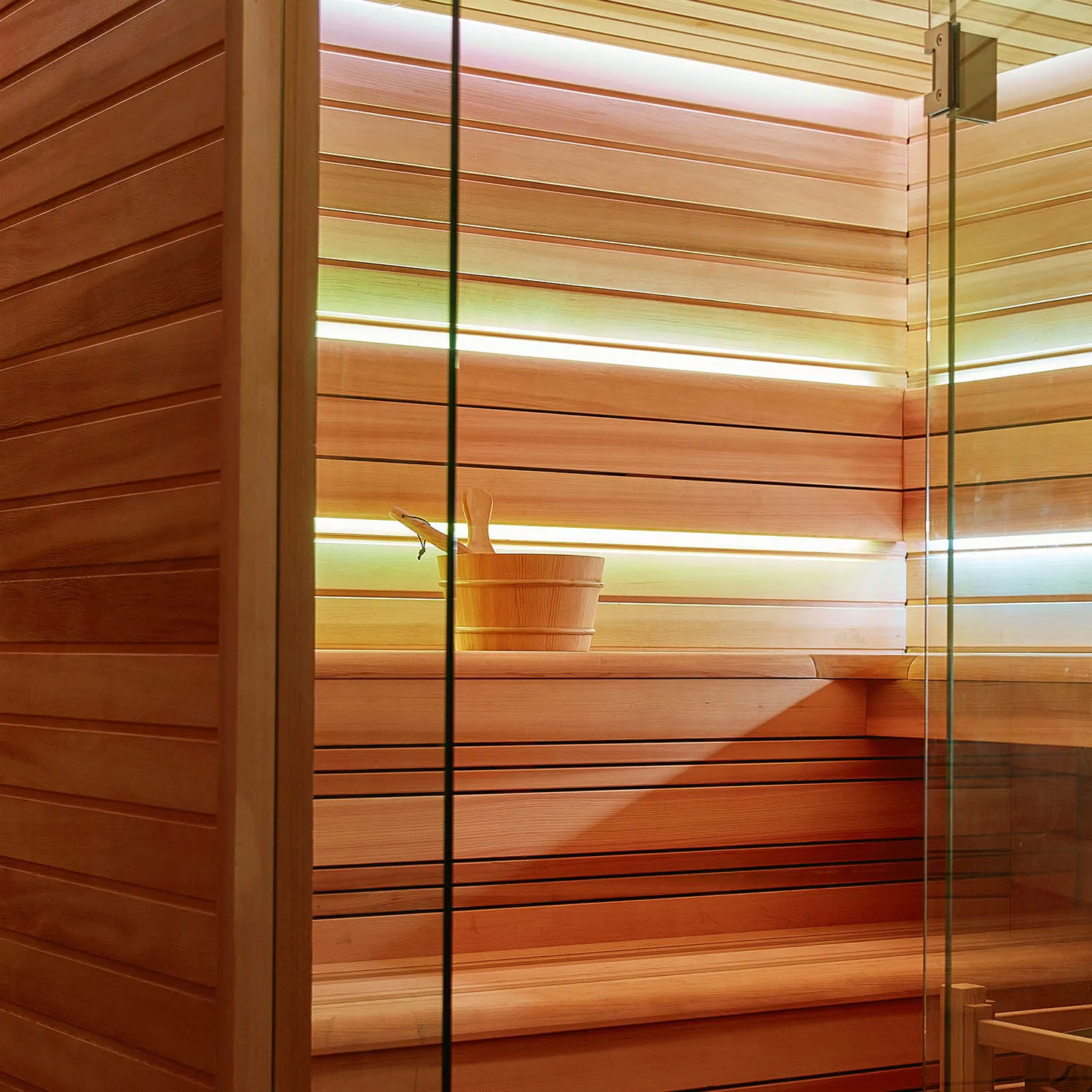
What standards should an outdoor sauna steam room drainage system meet?
Based on the aforementioned water sources and drainage requirements, the drainage system for an outdoor sauna steam room should provide the following basic functions:
3.1 Floor Drainage Slope Design
The floor should be designed to slope toward a specific drain outlet (typically a 1-2% slope) to direct condensate and flushing water into a centralized location.
The drain outlet should be located in a corner or in a least-used area to facilitate cleaning and avoid stagnant water that could interfere with user access.
3.2 Drains and Floor Drains
Install a stainless steel or heat-resistant PVC floor drain above the drain outlet to filter out hair and debris.
Large sauna rooms may consider installing concealed drains and an external underground drainage system, which is suitable for commercial or high-use environments.
3.3 Steam Generator Drain Connections
·The steam generator must be connected to a dedicated drain pipe.
·The drain pipe should be heat-resistant and non-clogging and connected to the outdoor sewer system.
·Do not allow the steam generator to drain directly into the room.
3.4 Use Highly Anti-Slip and Water-Resistant Materials
It is recommended to use ceramic tiles, composite preservative wood, or polymer waterproof materials for the floor to prevent direct contact between the wood and accumulated water.
The surface should be treated with an anti-slip treatment to prevent slipping in wet conditions.
3.5 External Rainwater System Connections
·If the sauna room is located in an open-air or semi-enclosed space, the roof may be washed away by rainwater.
·The sauna room drainage should be separate from the rainwater drainage system to prevent water from backing up into the room and clogging the pipes.
Outdoor Sauna Steam Room: What are the consequences of not having a drainage system?
Ignoring drainage design can lead to the following consequences for your outdoor sauna steam room:
Problems | Description | Risk Level |
Flooding | Steam and cleaning residue accumulate | Medium: Difficult to clean, slippery |
| Mold growth | Water accumulates in corners and joints and doesn't dry out | High: Health risks, structural damage |
| Wood expansion and deformation | Water soaks into wooden structures for a long time | High: Structural failure, high repair costs |
| Electrical hazards | Steamer contacts residual water, causing a short circuit | High: Potential for safety incidents |
| Degraded user experience | Long-term dampness and odor | Medium: Users are reluctant to use again |
Therefore, drainage is not only a structural requirement but also fundamental to ensuring hygiene, safety, and a comfortable experience.
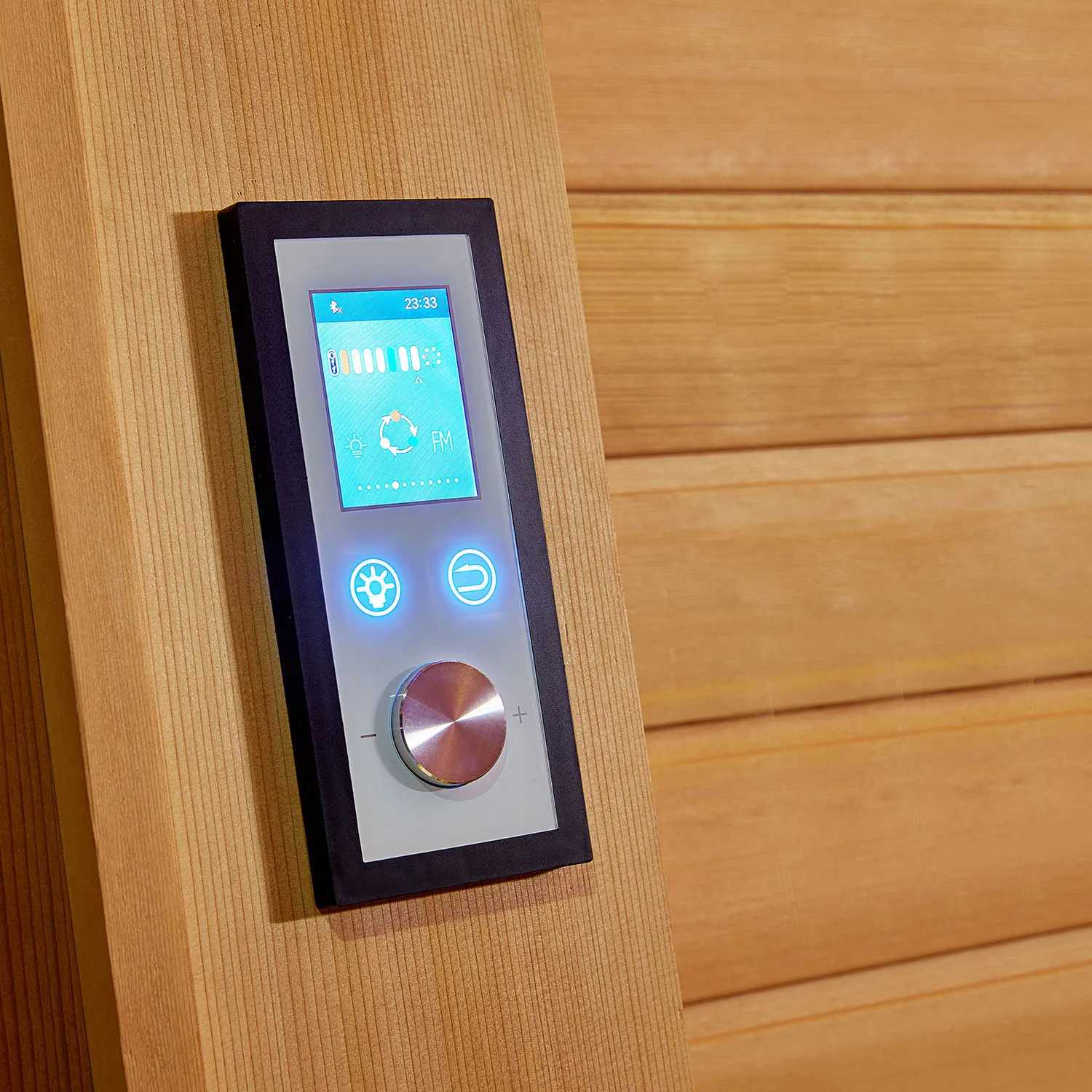
Design and Construction Recommendations for Drainage in Outdoor Sauna Steam Rooms
If you plan to build or renovate an outdoor sauna steam room, follow the following drainage design standards:
✅ 1. Assess the terrain before site selection
Select a site with good drainage. Low-lying areas or areas prone to water accumulation are not recommended.
Avoid locations near direct rainwater outlets.
✅ 2. Incorporate drainage channels during construction
Prepare PVC drainage pipes with a diameter of at least 50mm under the floor.
The drainage system should connect to the main residential drainage system or drain into a garden well.
✅ 3. Use compatible drainage interface equipment
Select steam generators with built-in drainage interfaces and electric drain functions.
Use elbows and return valves to prevent sewage backflow.
✅ 4. Design a structure that is easy to clean and maintain
The drain outlet should be easily disassembled for cleaning to prevent drainage problems.
The material should be heat-resistant and corrosion-resistant to prevent pipe aging and cracking.
In summary, from the perspectives of practical use, moisture management, hygiene maintenance, safety, and longevity, outdoor sauna steam rooms must have a drainage system. While being "outdoor" provides better ventilation, it cannot replace the scientific management and treatment of condensate and wastewater.
The key conclusions are as follows:
1. Outdoor sauna steam rooms generate large amounts of condensate, sweat, and rinse water, which must be promptly drained;
2. The steam generator also requires an independent drainage connection after operation;
3. The lack of a drainage system poses health and safety risks and increases maintenance costs;
4. A sound drainage design should include slope control, drain pipe layout, floor drain configuration, and material selection.
Therefore, for anyone constructing, using, or purchasing an outdoor sauna steam room, drainage should not be considered an afterthought but rather a core function to be carefully designed and implemented.
How does Yuehua handle customized orders for different markets?
Yuehua’s strength lies in our ability to customize spa, sauna, and gazebo designs according to regional preferences. For example, European buyers often request specific CE-certified models, while American buyers prefer ETL standards. Our team of designers and engineers collaborate with customers to create unique, branded solutions.
We support both OEM customization and wholesale production, ensuring that every order matches the buyer’s requirements. As a China supplier, we offer low price quotes, discount programs, and high quality manufacturing.

